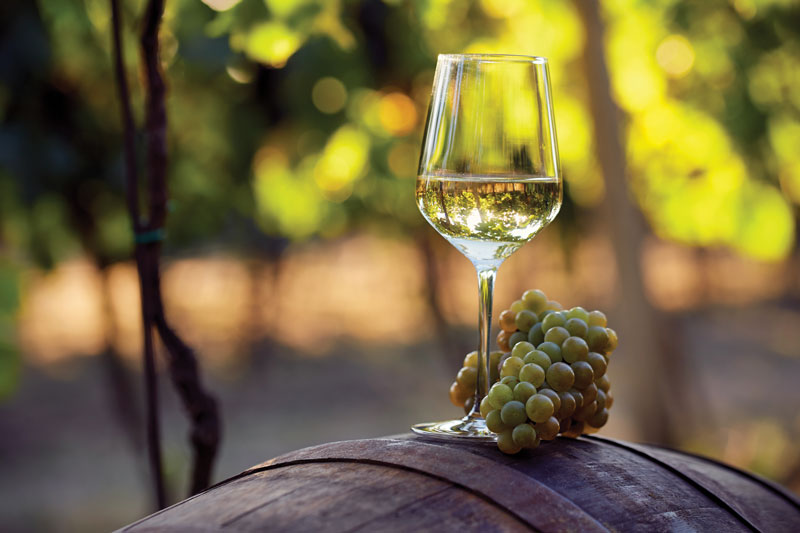Indeed, that flavor you’re after is primarily caused by the malolactic bacteria, which impart that buttery, dairy, or creamy taste in many Chardonnays. This is because these bacteria, depending on the strain, can produce a lot of a compound called diacetyl, which is a natural byproduct of their malic acid metabolism. Diacetyl really does smell like butter and is purposely produced in the commercial food industry to flavor, you guessed it, movie theater popcorn along with crackers, baked goods, and other things that need a little buttery kick to mimic the real thing.

How to get more of it naturally into your wine? Choose a malolactic (ML) strain like Lallemand’s PN4 and Beta, both of which are sold by Scott Laboratories in the United States. My connections at Scott Labs tell me that PN4 is “creamier” while Beta will come across as more “buttery.” Choose wisely and you’ll be rewarded with higher-than-usual levels of the buttery goodness. Not all ML cultures are alike, and these two are examples of those which have been meticulously bred to produce diacetyl under the right conditions.
Of course, it couldn’t be as easy as simply sprinkling a magic packet on top of your newly fermented Chardonnay. It’s also critical to take a 360-degree view and provide the right overall conditions for buttery success.
Here’s how to optimize your chances for a high-butter Chardonnay using a ML strain like those mentioned earlier:
- Don’t co-inoculate: ML bacteria and primary fermentation yeast (Saccharomyces cerevisiae) are sometimes added together in order to speed up the completion of the malolactic fermentation. Yeast can break down diacetyl so this recent trend of completing both fermentations simultaneously will result in less-than-optimal levels of diacetyl.
- Minimize lees contact time from the primary fermentation: The shorter the contact time with yeast lees the higher the diacetyl production. After primary fermentation is over let the yeast settle for a few days, rack or even do a rough filtration to exclude them before you inoculate with your ML culture.
- Go low and slow: The slower the ML fermentation, the higher the production of diacetyl. To that end, keeping temperatures moderate (55–60 °F/13–16 °C) will allow the fermentation to continue but not too rapidly. If your Chardonnay has a higher pH the ML fermentation will progress more rapidly as well. I recommend having Chardonnay start ML fermentation under 3.55 pH. Adjust with tartaric if needed.
- Use a minimal inoculation: Always follow the manufacturer’s instructions but going in at the lower end of the recommended dose rate will result in a slower ML fermentation and therefore a higher level of diacetyl production.
- Stir the lees: Stirring lees (though you shouldn’t have too much sludge, as hopefully you removed most of it first) during ML fermentation keeps the conditions from becoming reductive, which can repress the production of diacetyl. Stirring lees after the ML fermentation is complete is also a way to enhance mouthfeel by releasing mannoproteins and other “creamy”-feeling compounds into the wine.
- Add SO2 normally: Once the ML fermentation is complete and you adjust your free SO2 to around 25 ppm or so, the diacetyl may seem to disappear. This is because SO2 binds to diacetyl in a reversible reaction; over time the diacetyl will be released back into the wine and your buttery goodness will return. It’s important to use SO2 if you want to foster diacetyl production because it inhibits spoilage yeast and bacteria activity, which can reduce it.
- Age on oak: I find that the oak choice you make can really enhance the buttery, creamy characteristics of the final wine. Oak does not contribute diacetyl in any way, but the supporting aromas and flavors of vanilla, caramel, and crème brûlée can really boost and flesh out the bare diacetyl notes. I’d be willing to bet your favorite Chardonnay isn’t just about diacetyl but also about a host of these supporting flavors and aromas. You don’t have to invest in barrels, either, as there are plenty of oak pieces and chips on the market, even some specifically toasted and blended to contribute certain overlaying finishes to wines. Check out Radoux’s Pronektar line or the precision chips of Vivelys’ Boisé Origine. Both are high-quality products that don’t taste “chippy” in the finished wines and only take about two months or so to fully extract.
Don’t like oaky, butter-bomb Chardonnays? You’re in luck. For those readers who like a fruit-driven Chardonnay and abhor the buttery characteristics of diacetyl, do the opposite of the above if you want to minimize its role in your wine program.




